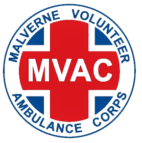
Download a membership application (fillable pdf) by clicking here.
Mail or drop off application at 11 Hempstead Ave, Malverne, NY 11565.
A team member from our membership committee will contact you once we receive your application.
Please visit our frequently asked questions or contact us for more information or any questions you may have.

Becoming an EMT requires dedication and time along with the spirit of volunteerism and the willingness to continuously learn in a high risk and challenging environment. The training that you will receive will benefit you far beyond the reaches of The Malverne Volunteer Ambulance Corps. Many of our members dedicate well over the required amount of time needed to be in good standing with the ambulance corps. We seek members that are looking to join a team and become a part of a family of dedicated EMS responders who volunteer their time to help render medical aid to the residents of the Village of Malverne.
Below is a list of the 4 levels of Emergency Responders that Nassau County recognizes:
Certification received for completion for these courses is for a three-year period. The EMS Academy provides initial and re-certification courses for each provider-level listed.
Emergency Medical Technician Basic (EMT-B) (137 hours)
EMTs are the basic level of EMS provider associated with an ambulance service or rescue squad. These technicians are skilled in the provision of basic life support for the many illnesses and accidents that require emergency medical treatment prior to arrival in a hospital emergency department. EMTs are trained in patient immobilization and packaging procedures needed to prevent further injury and to provide safe transport to an appropriate medical facility. NYS regulations require that a certified ambulance service have a minimum of one EMT with the patient at all times. PONSI approved: credit recommendation: 6 semester hours
Advanced Emergency Medical Technician (AEMT) (200 hours)
The AEMT level is summed up by the National Registry of EMTs as:
“The primary focus of the Advanced Emergency Medical Technician is to provide basic and limited advanced emergency medical care and transportation for critical and emergent patients who access the emergency medical system. This individual possesses the basic knowledge and skills necessary to provide patient care and transportation. Advanced Emergency Medical Technicians function as part of a comprehensive EMS response, under medical oversight. Advanced Emergency Medical Technicians perform interventions with the basic and advanced equipment typically found on an ambulance. The Advanced Emergency Medical Technician is a link from the scene to the emergency health care system. [From the: National EMS Scope of Practice Model]”
Emergency Medical Technician – Critical Care (EMT-CC) *No more original classes offered
Emergency Medical Technician Paramedic (EMT-P) (1400 hours)
Objectives: Appropriately assess and correctly treat a single or multiple systems trauma patient in any given situation; appropriately assess and correctly treat a patient suffering from a medical emergency including conditions involving the respiratory system, cardiovascular system, nervous system, muscular system, skeletal system, integumentary system, endocrine system, digestive system, genitourinary system, and reproductive system; discuss the principles used in treating medical emergencies involving pediatrics, obstetrics, neonates, shock, behavioral disorders, toxicology, alcoholism and drug abuse, geriatrics, anaphylaxis, and infectious diseases; perform the following skills at the appropriate time in the correct situation: airway control and ventilation, endotracheal intubation; intravenous cannulation, administration of medications by intravenous, intramuscular or subcutaneous route, defibrillation, EKG interpretation, chest decompression, emergency cricothyrotomy, application of pneumatic antishock garment (PASG), fixation and traction splinting, bandaging, spinal immobilization and use of other devices appropriate to the care of the sick and injured; demonstrate disentanglement of a patient, packaging and removal from the scene, radio communications with medical control and use of report writing skills; discuss and demonstrate the roles and responsibilities of the paramedic in performing both the emergency and operational aspects of the job.
Instruction: This program is designed to provide the advanced education needed by paramedics to administer patient care in the pre-hospital setting. This program covers all techniques of advanced emergency medical care presently considered within the responsibilities of the paramedic as well as all operational aspects of the job which the student will be expected to perform. Emphasis is placed on recognition of symptoms of illness and injuries, and application of proper procedures of advanced emergency care. Demonstration, practice, clinical, and field experiences are carefully integrated with the didactic portion. The curriculum consists of eight divisions: preparatory, airway management, patient assessment, trauma, medical, special considerations, assessment based management, operations. Graduates of the program are entitled to sit for the New York State Paramedic Certification Examination.
Credit recommendation: In the lower division baccalaureate/associate degree category or in the upper division baccalaureate degree category, 37 semester hours in Allied Health Sciences distributed as follows: 25 lecture, 8 clinical, and 4 field experience (7/05).
Training is available from several venues in Nassau County, including the The Nassau County EMS Academy VEEB, Nassau County Fire-Police EMS Academy, NSLIJ – The Emergency Medical Institute.
Visit the Nassau Regional Emergency Medical Services Council website for information on available courses and prerequisite requirements.

